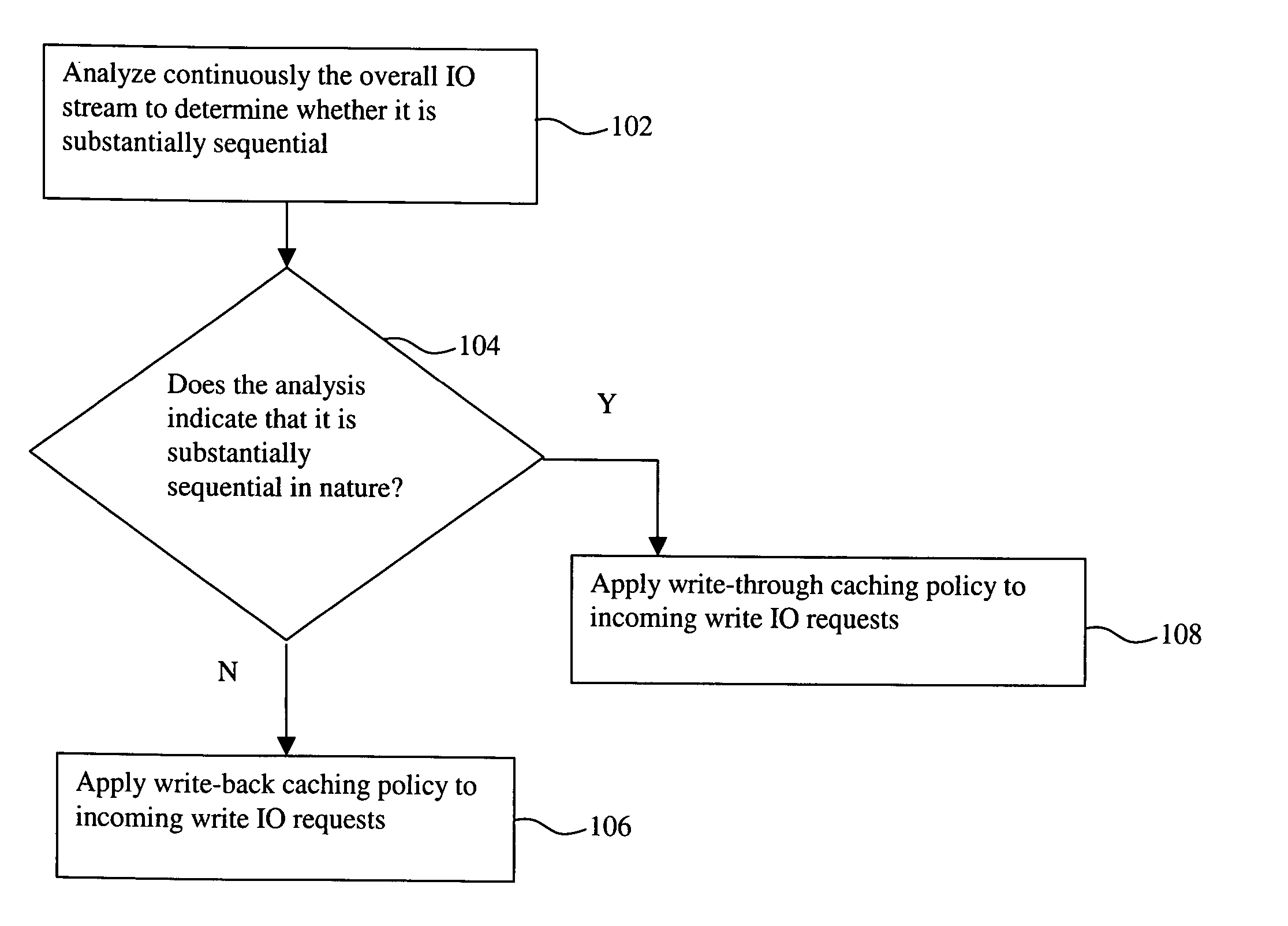IO-stream adaptive write caching policy adjustment
a write-through caching and adaptive technology, applied in the direction of memory adressing/allocation/relocation, input/output to record carriers, instruments, etc., can solve the problems of significant performance degradation, connection of multiple devices, and part of the user is an added cost to the overall cost of ownership and maintenance of the system, so as to improve the risk of an event occurring, enhance the overall performance, and improve the performance over write-through caching
- Summary
- Abstract
- Description
- Claims
- Application Information
AI Technical Summary
Benefits of technology
Problems solved by technology
Method used
Image
Examples
Embodiment Construction
[0035] Reference will now be made in detail to the present preferred embodiments of the invention, examples of which are illustrated in the accompanying drawings. Wherever possible, the same reference numbers are used in the drawings and the description to refer to the same or like parts.
[0036] In general, for virtually any kind of IO load, write-back caching policy exhibits the best performance. However, as mentioned above, there are circumstances in which write-through caching policy will yield better performance for IO streams that are substantially sequential in nature. With such streams, mechanical latencies and overhead in the PSDs are reduced significantly and so can actually be overshadowed by performance bottlenecks elsewhere in the system that may be more severe when write-back caching policy is selected compared to when write-through is selected. These bottlenecks are related to the particular configuration, existing in some configurations and not in others. One such con...
PUM
 Login to View More
Login to View More Abstract
Description
Claims
Application Information
 Login to View More
Login to View More - R&D
- Intellectual Property
- Life Sciences
- Materials
- Tech Scout
- Unparalleled Data Quality
- Higher Quality Content
- 60% Fewer Hallucinations
Browse by: Latest US Patents, China's latest patents, Technical Efficacy Thesaurus, Application Domain, Technology Topic, Popular Technical Reports.
© 2025 PatSnap. All rights reserved.Legal|Privacy policy|Modern Slavery Act Transparency Statement|Sitemap|About US| Contact US: help@patsnap.com



